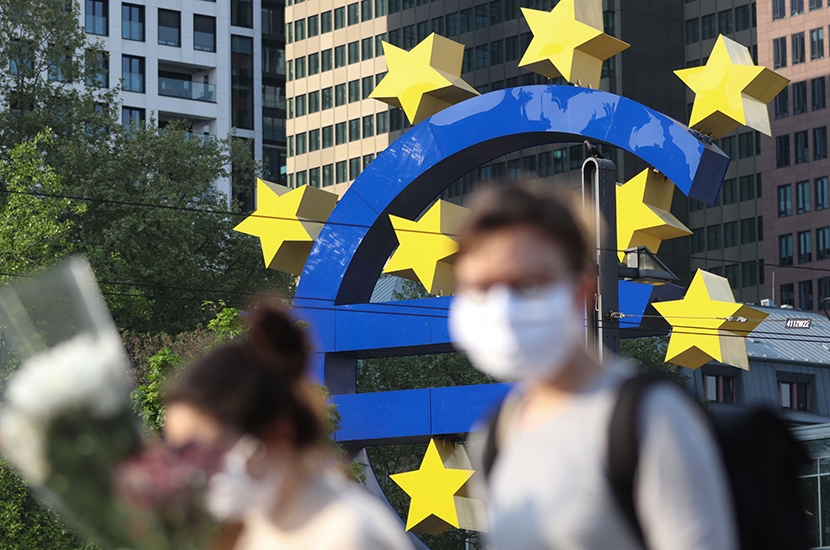London
China is now suffering only mild symptoms from the global pandemic. It is Europe that is stuck with the dreaded long COVID. The Chinese economy has rebounded and its exports are going through the roof, as it sells medical equipment to a world devastated by the pandemic it covered up. The virus originated in Wuhan, yet China has avoided much of the pain, despite how slow Beijing was to admit to the initial outbreak. But eurozone economies were a tenth smaller this spring than at the start of the year.
Only a few weeks ago, it had seemed that Britain — and the rest of Europe — was on a steady path to recovery. The UK economy seemed to be bouncing back. This stood to reason: we have significantly more control over COVID-19 than we did in March. We’re armed with more facts, including fatality rates — 0.05 percent for under-seventies. Treatments have come a long way. We’ve traded ventilators for anti-inflammatories, and are saving thousands of lives because of this. Second waves of COVID, while on the rise in Europe, have not yet come close to reaching infection rates or the death toll we experienced the first-time round.
It was possible — in theory — for the West to continue the job of social and economic repair while regarding COVID as a manageable risk. But that battle was played out over the summer when Rishi Sunak, the UK chancellor, subsidized people to ‘help out’ by eating out — the opposite message to ‘stay at home, save lives’. It seems Sunak has lost the argument now. Wales is returning to its ‘stay at home’ messaging with a 17-day lockdown, Northern Ireland is in a ‘circuit breaker’, and more than 28 million people across England are no longer able to meet up with friends and family in pubs or restaurants. And it’s only October.
Under the weight of such restrictions and uncertainty it is near-impossible for the economy to rebound. The government’s pledge to level up the country has been put on pause because the shutdown of business and economic activity has leveled down nearly every region outside of the south-east. Investment decisions are also on hold: not just cash to companies, but the investment employers make in their employees as well. Mass unemployment looms and bosses have no incentive to take on the financial risk of new workers, not when they might be told to shut their doors again. It’s nearly impossible to plan ahead with no vaccine or mass testing strategy in sight.
[special_offer]
The UK government couldn’t make ends meet before the COVID crisis hit. Unfunded spending promises made by successive governments had ballooned the national debt, with the ratio of debt to GDP on course to nearly triple in the next 50 years. Now it’s set to quadruple, as the pandemic has crushed any hopes of a smaller debt in the future: the debt rose more in August and September than it did in the entire decade of the 1970s. The economy is now hedged on a massive bet that interest rates will stay at rock bottom. If one thread snags — rates, confidence, the generosity of central banks — Britain, and indeed much of the West, could be very vulnerable.
The West’s struggle is already being reflected in the COVID recovery data. This week Oxford Economics published its latest forecasts for the world’s economies. If you’re looking for a V-shaped recovery, you can only spot one: in China, which is nearly back to the 6 percent growth rate it boasted before COVID hit.
But the biggest fear isn’t that the economy will have a lackluster recovery, it is that it will collapse once again. The Institute for Fiscal Studies recently published a pessimistic scenario for recovery — accounting for more restrictions and lockdowns — which reveals not a V but the wonky W. Another contraction would be the nail in the coffin for the many jobs and businesses that only just made it through the first lockdown, no matter how large a fiscal package the Treasury puts behind them. Regardless of whether the virus is beaten, the UK and other western countries are set to suffer the economic symptoms of long COVID for years — even decades — to come.
This article was originally published in The Spectator’s UK magazine. Subscribe to the US edition here.


















